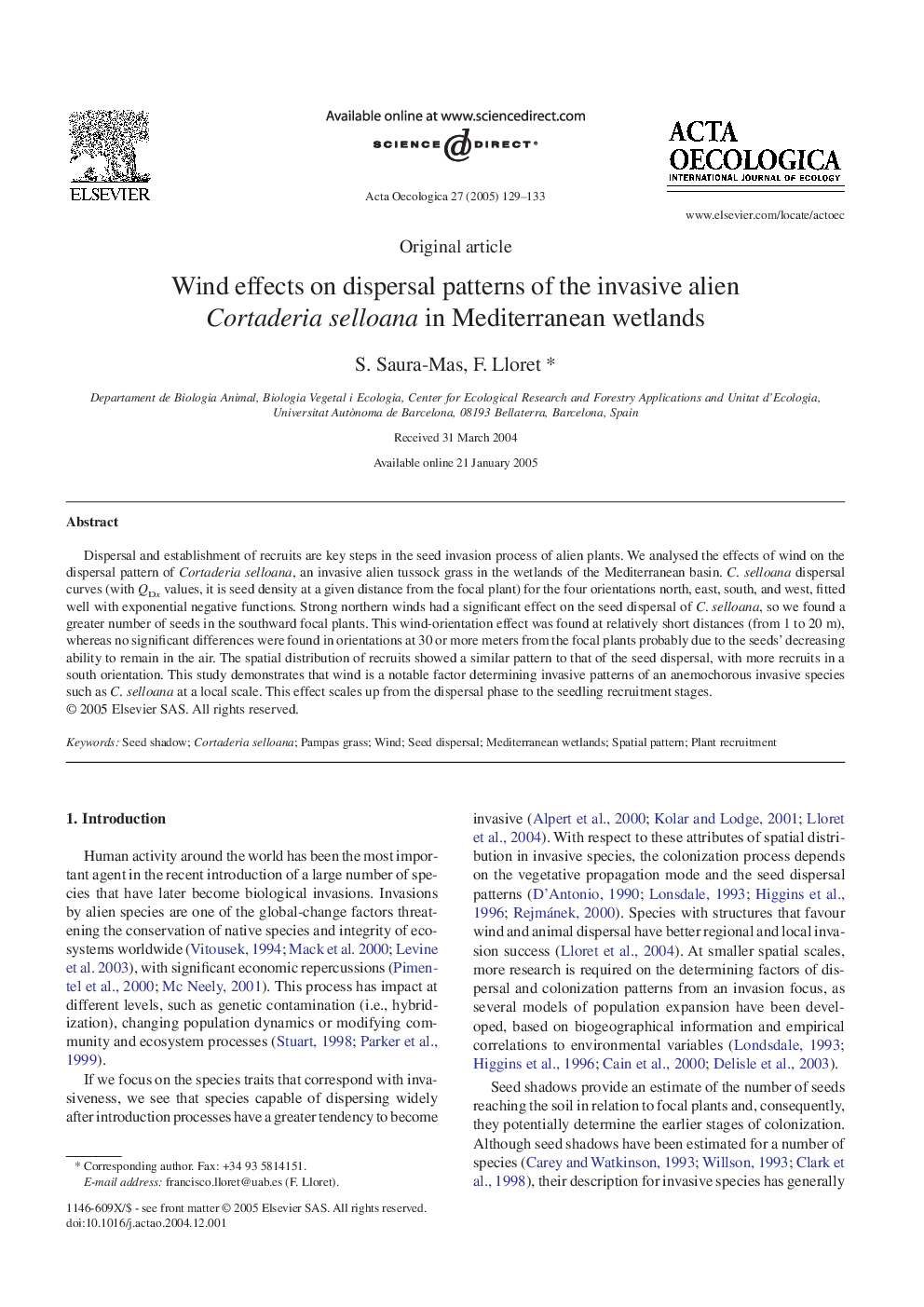| Article ID | Journal | Published Year | Pages | File Type |
|---|---|---|---|---|
| 9444931 | Acta Oecologica | 2005 | 5 Pages |
Abstract
Dispersal and establishment of recruits are key steps in the seed invasion process of alien plants. We analysed the effects of wind on the dispersal pattern of Cortaderia selloana, an invasive alien tussock grass in the wetlands of the Mediterranean basin. C. selloana dispersal curves (with QDx values, it is seed density at a given distance from the focal plant) for the four orientations north, east, south, and west, fitted well with exponential negative functions. Strong northern winds had a significant effect on the seed dispersal of C. selloana, so we found a greater number of seeds in the southward focal plants. This wind-orientation effect was found at relatively short distances (from 1 to 20 m), whereas no significant differences were found in orientations at 30 or more meters from the focal plants probably due to the seeds' decreasing ability to remain in the air. The spatial distribution of recruits showed a similar pattern to that of the seed dispersal, with more recruits in a south orientation. This study demonstrates that wind is a notable factor determining invasive patterns of an anemochorous invasive species such as C. selloana at a local scale. This effect scales up from the dispersal phase to the seedling recruitment stages.
Related Topics
Life Sciences
Agricultural and Biological Sciences
Ecology, Evolution, Behavior and Systematics
Authors
S. Saura-Mas, F. Lloret,
